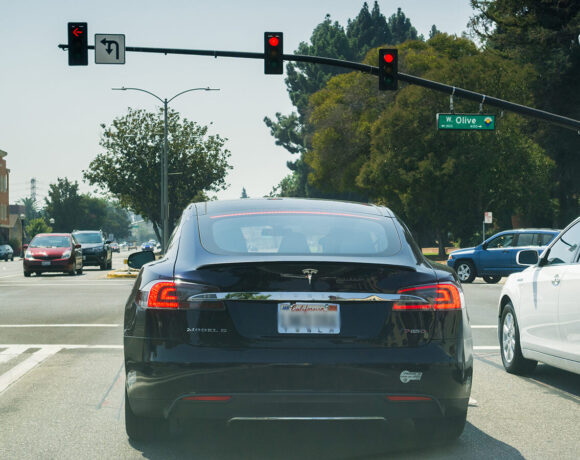New Amaze

Developed from the Brio hatchback, the Amaze was the first ever Honda to offer a diesel engine in India. It was the most spacious car in its class, when it came out in 2013, but competition was strong and has now taken the game much forward. The first generation car had sold over 250,000 units in 8 years and the replacement is likely to do much better. We sample a pre-production version to see how good it really is.
Honda has gone in a completely different styling direction with the new Amaze. Where the old one was a short-nose, cab-forward Brio with a boot stuck on, the new Amaze tries to look like a conventional three box sedan. The bonnet is much flatter, the shoulder line is much more horizontal and the boot is so cohesive. The front and rear end styling are influenced by the International Civic, with a clear emphasis on making the car appear wider. The squared grille extends into the headlamps and appears to be one long element. The car has a 65 mm longer wheelbase than before. The Amaze also gets wider track which has gone up by 17 mm and 25 mm at the front and rear. It is also claimed to be 40 kg lighter than the model it replaces.
The new Amaze also promises to be bigger on the inside with more knee and legroom. Shoulder room at the rear has gone up by 45 mm. The front seats are much plusher now with extendable head restraints and are a big improvement from the slim units in the earlier car. The rear seats also feel wider and the back rest angle is good, although taller people would wish for more headroom. The dashboard and trim are finished in black and beige and plastic quality are satisfactory for most part. The texture and grain finish impart a premium feel to the cabin. Equipments include keyless entry, push button start, automatic climate control, cruise control, dual airbags, ABS EBD etc. The top end variant also gets an infotainment unit with Android Auto and Apple Car Play, which none of the automatics get at the moment. The boot space has been increased by 20 litres and is now 420 litres.
The old Brio platform was fun in the corners and the new Amaze doesn’t disappoint either. Yes, the steering could do with a bit more weight, but it is precise and the car feels eager to turn into a corner. The wheel size has gone up by an inch to 15 inches and the diesel uses a slightly wider 5.5 J rim (petrol 15×5 inch), but both models have identical 175/65 R15 tyres. The car feels planted and stable at high speeds too. Honda has limited the top speed of all Amazes to 145 kmph, but it feels composed at that speed. Ride quality is far better than the previous generation, with revised damper ratios, altered damper angle and urathene bump stops in place of natural rubber ones. The ground clearance has been increased slightly to 170 mm, but then it tends to bottom out with full complement of passengers at the rear, than we remember the old one did.
The big news this time is the diesel CVT. The Ameo uses a dual clutch gearbox and the Dzire uses an AMT, but Honda has stuck to the tried and tested CVT unit from their petrol cars. It must be noted that the Amaze CVT has 80 bhp and 160 Nm torque, while the manual transmission model has 100 bhp and 200 Nm. Honda, although it cited many reasons for detuning its diesel including drivability, has reduced the torque output by 40 Nm for the CVT to cope without any slip. Although it is the first time that Honda has done it globally, the diesel CVT combination works well here. It is quite smooth and pulls along nicely at low revs thanks to the torque convertor doubling the torque. With the accelerator all the way down, the engine is held at a steady 3600 rpm and the car accelerates seamlessly. You don’t feel that it is that much slower than the 100 bhp MT version because of the constant pull at that given engine speed, not having to deal with a varying power band. The engine makes an incessant drone when you do that, but thanks to new insulation material under the engine cover (it is less clattery than ever before). It also returns very good fuel efficiency and the combination is perfect. The diesel CVT has an L mode to lock the gearbox at a lower ratio such as when going down a slope, but doesn’t get the paddle shifters which the petrol CVT comes with.
The 1.2 litre 90 bhp, 110 Nm iVTEC motor also gets a CVT gearbox, but it is the same engine and gearbox combination we have seen in the Jazz. It is a fine car for city driving, but out on the highway, when driving fast, you will not be pleased. Anything more than 50 per cent throttle and it makes an awful lot of noise sending the engine to the highest part of its power band and letting it sit there while the car picks up speed very gradually. Mercifully, you can reduce the noise by tugging one of the paddles on this stepped 7 speed CVT gearbox. But, you always feel the engine is strained beyond its comfort zone when you are driving fast and want to dial it down. It is very good inside the city when driven sedately. Fuel efficiency is also way better than the old Amaze petrol AT, which had a conventional torque convertor gearbox.
The new Amaze is a thoroughly improved version of the earlier car. Whereas, the old one was a Brio with a boot, this one has been designed grounds up to be a sub 4-metre sedan. It looks way better proportioned than before, has nicer interiors, more equipments and automatic transmissions in both petrol and diesel variants. It also promises to have the cheapest service costs in its class and comes with 3 years unlimited kilometre warranty extendable up to 5 years. Our pick of the lot is the diesel CVT which although on paper, is down on power, feels well tuned for city and highway use. Since this is a pre-launch drive, prices aren’t known to us yet, but we expect Honda to price it at par with the Dzire.
Vivek Venugopal











